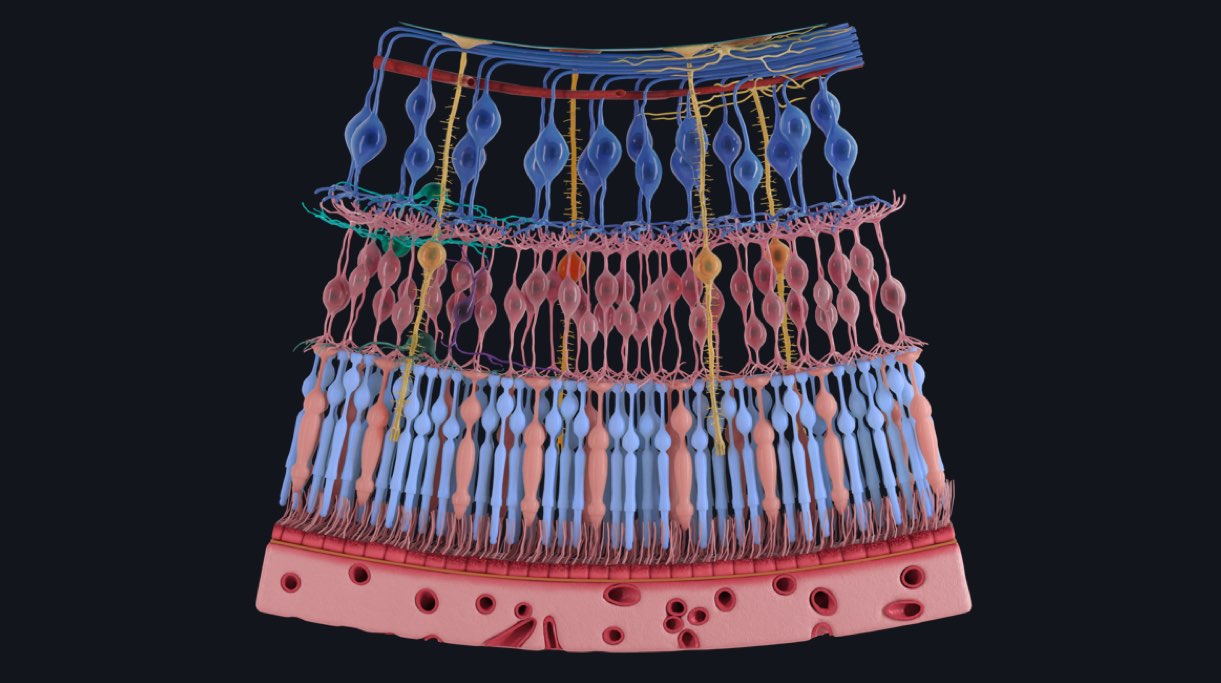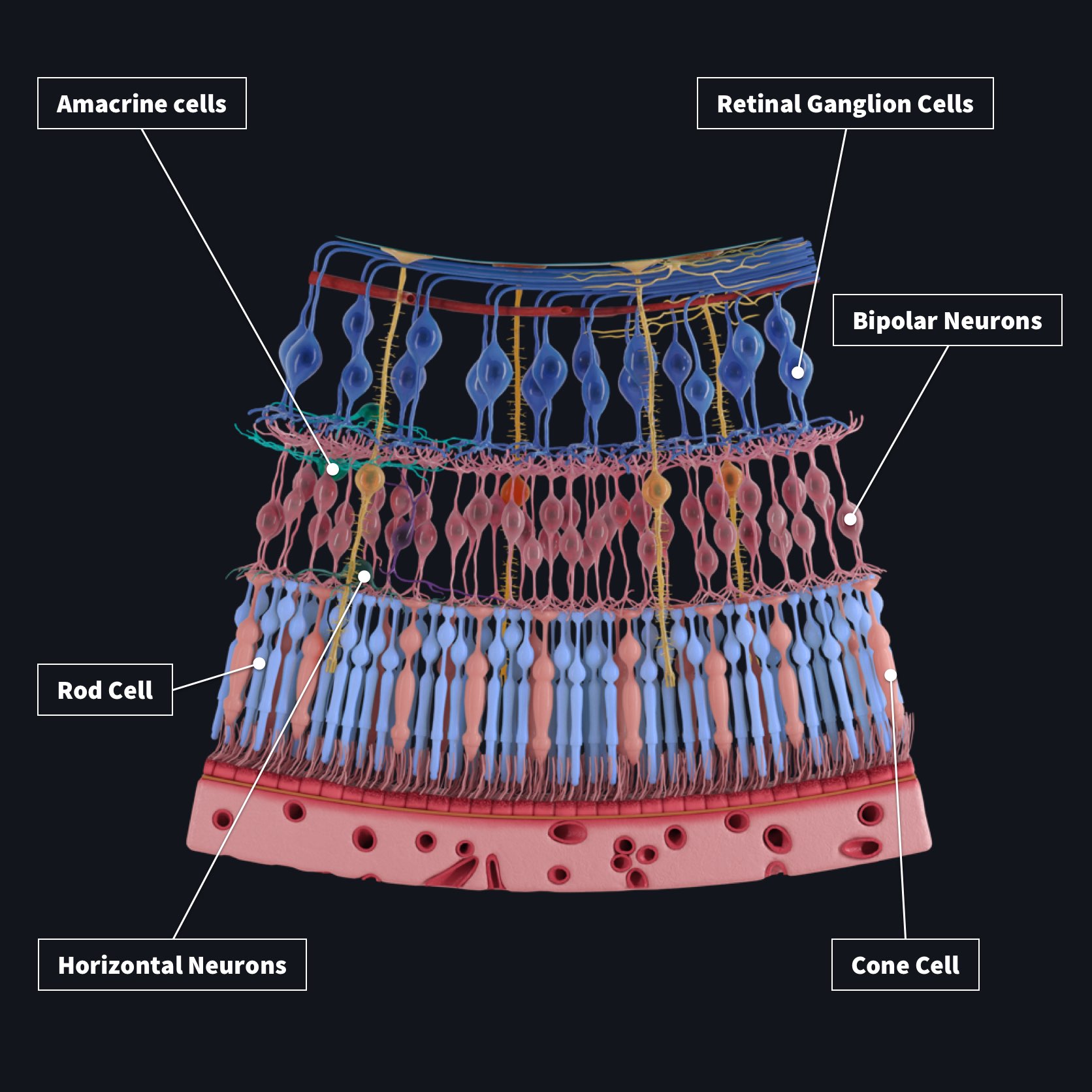
Our summer release is just around the corner! Feast your eyes on another exclusive preview. Introducing the Retinal Layers detailed model.
Did you know that despite its location in the eye, the retina is actually considered a part of the central nervous system?
The optics of the eye focus an image of the world on to the retina, similar to the film in a camera ?. It processes light by converting the activity of the photoreceptors cells into nerve impulses that are carried to the brain along the optic nerve. The inner workings of the retina have been easier to disentangle than other parts of the brain because the retina only has 5 classes of neurons.
They are:
- photoreceptors
- bipolar cells
- ganglion cells
- horizontal cells
- amacrine cells
Together, these cells form a chain which allows information, in the form of electrical and chemical signals, to reach the optic nerve where it travels to the brain. Remember, photoreceptor cell ? bipolar cell ? ganglion cell.

The retina is made up of a number of layers. The outer nuclear layer is where the cell bodies of the photoreceptors lay. The next layer, the outer plexiform layer, is where the synapses of photoreceptor terminals and bipolar cells meet. After the outer plexiform layer, we find the inner nuclear layer, which contains the cell bodies of bipolar cells. Finally, the axonal processes of bipolar cells create synapses with the dendritic processes of ganglion cells in the inner plexiform layer.
The final two neurons that make up the retina, the horizontal cells and amacrine cells, allow for information to be translated laterally across the inner nuclear layer. If we imagine a highway travelling from the outer layer to the optic nerve, these cells run perpendicular to the highway, functioning like an overpass. This allows for increased visual sensitivity to a wide range of light intensities. ?.
Each of these cell types are visible in the above sneak peak, can you visualize the different layers?
We’re working round the clock to deliver our biggest update of the year, and we’re very nearly there. Be sure to opt-in for New Technology Previews in your email preference, and be the first to find out when our summer release lands on the app stores.
